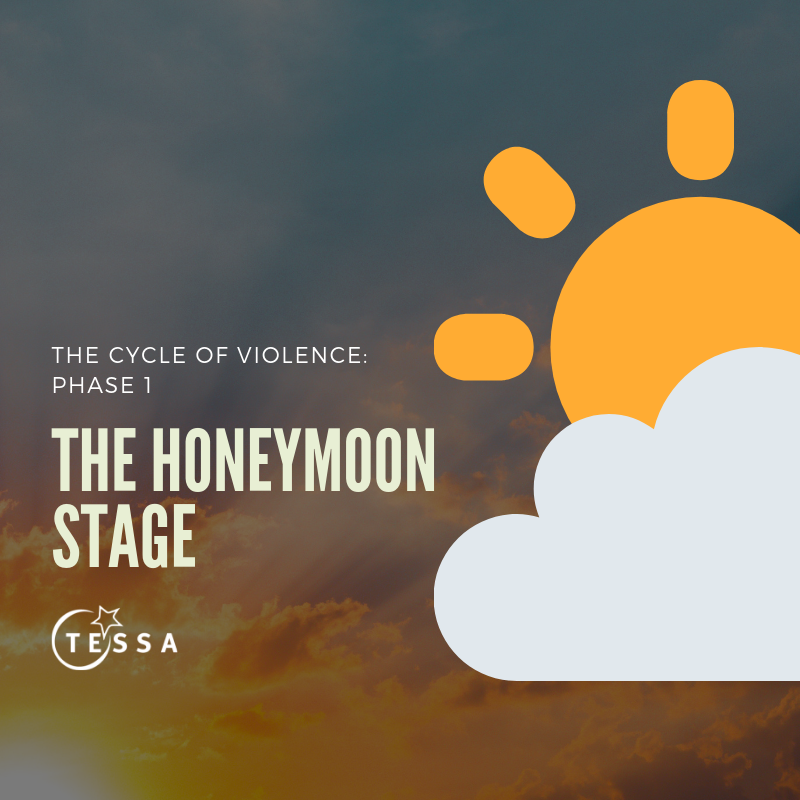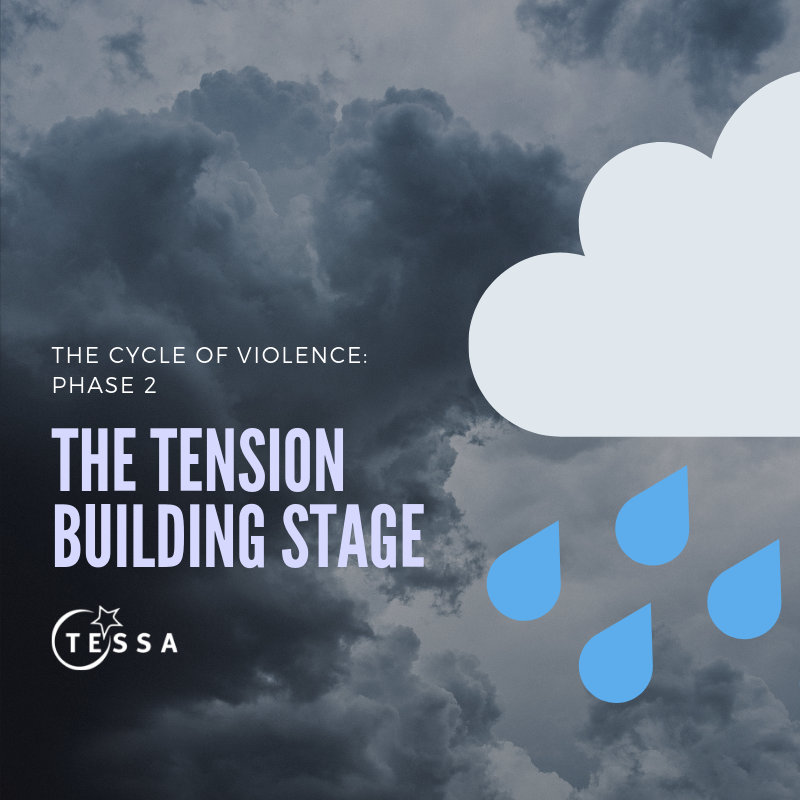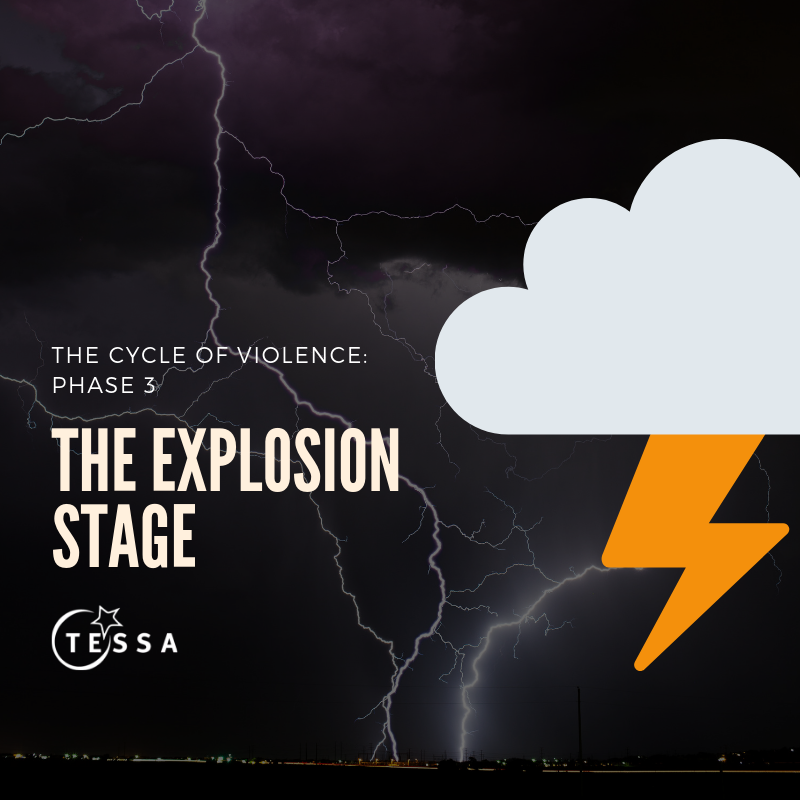Cycle of violence
More than in the U.S. have experienced relationship violence in their lifetimes.*[1]
The stereotype of relationship violence is a man beating a woman in an out-of-control fit of rage. In reality, abusive relationships are much more complex. Although abusers are usually men, there are women who use violence against their partners as well. A thorough review of the research indicates that women tend to use violence in self-defense; men tend to use violence to gain or keep control over their partners.[2]

Cycle of Violence
The theory of the Cycle of Violence was developed by Dr. Lenore Walker. It has three distinct phases which are generally present in violent relationships:
Remorseful/Honeymoon Phase
Tension Building Phase
Explosion Phase
Relationship violence often follows a repeating cycle within each relationship. Not every abusive relationship follows this pattern, but many survivors describe their relationships in this wayNational Center 4 Research
Phase One: Remorseful or Honeymoon
Survivor feels: Relieved, angry over the incident, resentful, guilty, hopeful, in denial over the seriousness of the incident
Behavior: Offers excuses for the batterer, may be withdrawn, tries to solve or prevent future incidents, hopes/believes changes will last
Abuser feels: Apologetic, remorseful, forgetful about degree of violence, self-righteous, unable to understand why the partner is still angry.
Behavior: Makes promises to change, blames her or others for the problem, may use alcohol or drugs as an excuse


Phase Two: Tension
Survivor feels: Angry, unfairly treated, hopeless, tense, afraid, embarrassed, humiliated, disgusted, depressed
Behavior: Nurturing, submissive, “walking on eggshells,” afraid to express feelings, may use alcohol and/or drugs to avoid situation
Abuser feels: Tense, frustrated, disgusted, self-righteous, or jealous
Behavior: Verbally abusive, fits of anger, silent, controlling, arrogant, possessive, demanding, irritable, may use alcohol or drugs
Phase Three: Explosion
Survivor feels: Frightened, trapped, helpless or numb
Behavior: May try to protect self, hit back, submit helplessly, get away or seek help
Abuser feels: Angry, enraged, “right,” jealous and/or frustrated
Behavior: Dangerously violent, has a deliberate desire to hurt or kill, out of control, irrational, “Dr. Jekyl/Mr. Hyde”

Bottom Line
In most cases, the abuser will not change, and the only way to end the abuse is for the victim to end the relationship. Unfortunately, the most dangerous time in an abusive relationship is when the victim tries to leave. That is when they are most likely to be seriously injured or even killed by the abuser. Homicide is one of the top 10 causes of death for women aged 20-44,[3] and more women are killed by their partners than by anyone else[4]. If you are in an abusive relationship, you can call the Safe Line at 719-633-3819 at any time of day or night to speak to someone trained to help you. The Safe Line operates 24 hours a day, seven days a week. All calls are confidential and anonymous, and interpreter services are available for more than 170 languages.
Sources: https://www.womenscenteryfs.org/index.php/get-info/prevention/education/14-cycle-of-violence
Sources: http://www.center4research.org/cycle-domestic-violence/
[1] Centers for Disease Control and Prevention. National Intimate Partner and Sexual Violence Survey: 2010 Summary Report. Available at: http://www.cdc.gov/ViolencePrevention/pdf/NISVS_Report2010-a.pdf. Accessibility verified March 13, 2013.
[2] Swan, SC, Gambone, LJ, Caldwell, JE, Sullivan, TP, Snow, DL. A review of research on women’s use of violence with male intimate partners. Violence and Victims. 2008; 23(3): 301-314.
[3] Centers for Disease Control and Prevention. National Vital Statistics Reports. Available at http://www.cdc.gov/nchs/data/nvsr/nvsr61/nvsr61_07.pdf. Accessibility verified March 13, 2013.
[4] Bureau of Justice Statistics. Intimate Partner Violence in the U.S. Available at: http://www.bjs.gov/content/intimate/victims.cfm. Accessibility verified March 13, 2013.